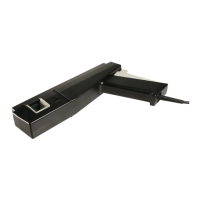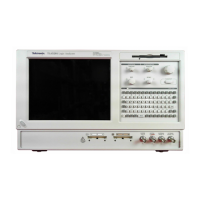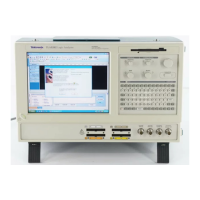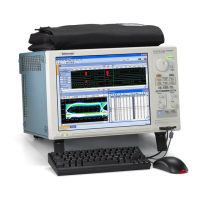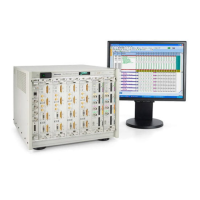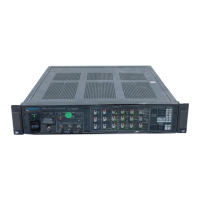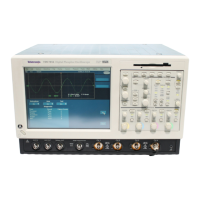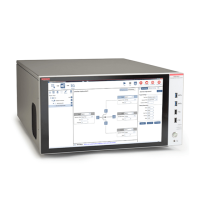Theory of operation
The dynamic ran
ge square (labeled Small Signal AC in the previous figure) can be
moved around within the limits of the operating voltage window by adjusting the
A and B offset voltage settings. The A and B offset voltage values determine the
location of the center of the dynamic range square in the operating voltage window
plot. The A and B offset voltages are both set to +1.75 V in the previous figure.
With these offset voltage settings, the probe tip linear measurement range is from
+0.5 V to +3.0 V for both the A and B tip inputs. Input voltages outside these
dynamic range limits will begin to compress and lead to measurement signal
distortio
n. Because the offset voltage range for the P7700 solder tips is ± 4.0 V, the
smaller dynamic range square c an be moved anywhere within the larger operating
voltage window.
Because there are several step gain values available within the P7700 Series
Probe Amplifier, the actual size of the dynamic range square depends upon the
oscilloscope vertical scale factor setting. The vertical scale factor determines the
required probe amplifier step gain setting, which is automatically set to the proper
value under the oscilloscope control.
The dynamic range square is set to its full-size 2.5 V
p-p
setting when the vertical
scale factor is set to large enough V/div settings that a 2.5 V
p-p
signal can be fully
displ
ayed on the oscilloscope. As the vertical scale factor is set to lower V/div
settings, the probe amplifier step gain threshold will eventually be reached and the
step gain value will be increased by one step.
Increasing the step gain by the nominal 2X factor decreases the size of the
dynamic range by half, which results in a decrease in the area of the dynamic
range square by a 4X factor. The decrease in linear dynamic range at different
step gain settings can be seen in the linearity plot in the following figure.
14 P7700 Series TriMode Probes Technical Reference
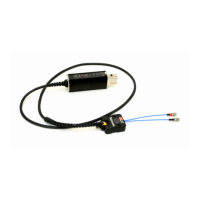
